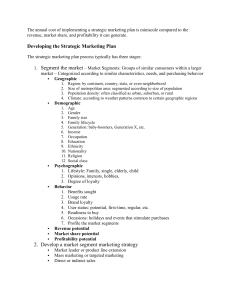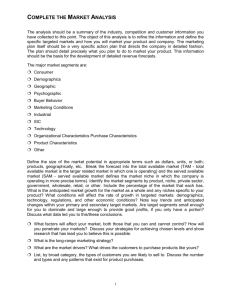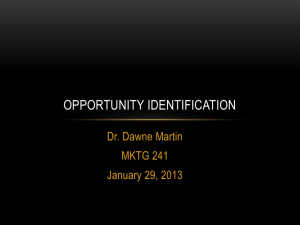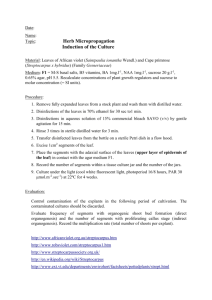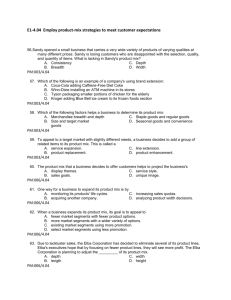our template - Michigan Small Business Development
advertisement
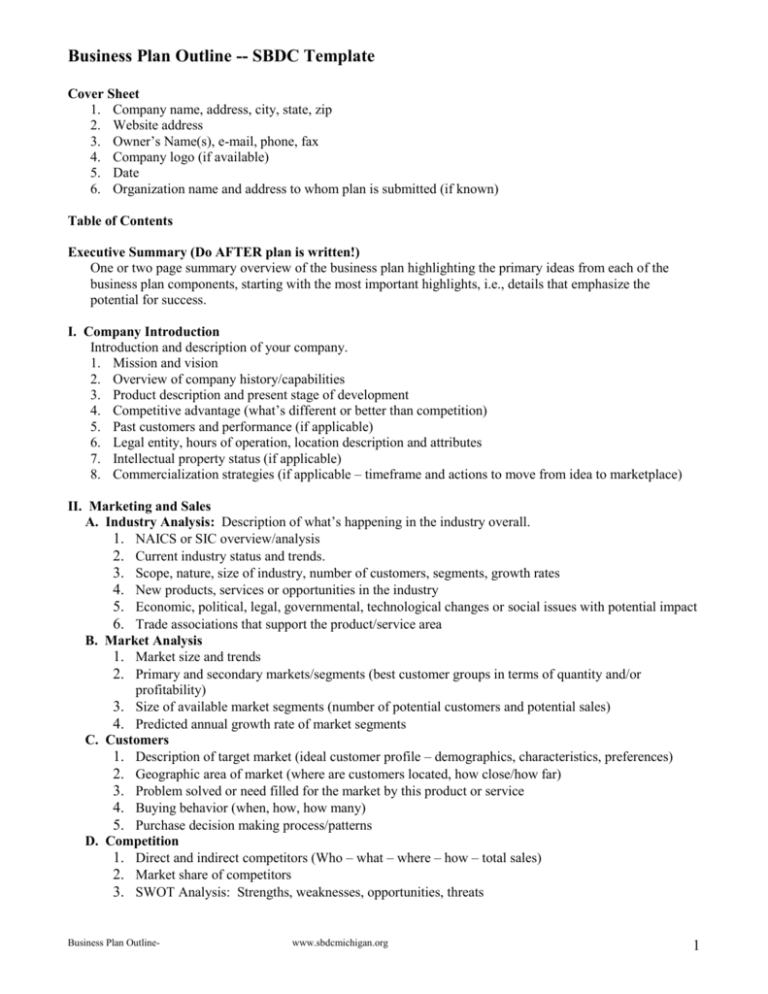
Business Plan Outline -- SBDC Template Cover Sheet 1. Company name, address, city, state, zip 2. Website address 3. Owner’s Name(s), e-mail, phone, fax 4. Company logo (if available) 5. Date 6. Organization name and address to whom plan is submitted (if known) Table of Contents Executive Summary (Do AFTER plan is written!) One or two page summary overview of the business plan highlighting the primary ideas from each of the business plan components, starting with the most important highlights, i.e., details that emphasize the potential for success. I. Company Introduction Introduction and description of your company. 1. Mission and vision 2. Overview of company history/capabilities 3. Product description and present stage of development 4. Competitive advantage (what’s different or better than competition) 5. Past customers and performance (if applicable) 6. Legal entity, hours of operation, location description and attributes 7. Intellectual property status (if applicable) 8. Commercialization strategies (if applicable – timeframe and actions to move from idea to marketplace) II. Marketing and Sales A. Industry Analysis: Description of what’s happening in the industry overall. 1. NAICS or SIC overview/analysis 2. Current industry status and trends. 3. Scope, nature, size of industry, number of customers, segments, growth rates 4. New products, services or opportunities in the industry 5. Economic, political, legal, governmental, technological changes or social issues with potential impact 6. Trade associations that support the product/service area B. Market Analysis 1. Market size and trends 2. Primary and secondary markets/segments (best customer groups in terms of quantity and/or profitability) 3. Size of available market segments (number of potential customers and potential sales) 4. Predicted annual growth rate of market segments C. Customers 1. Description of target market (ideal customer profile – demographics, characteristics, preferences) 2. Geographic area of market (where are customers located, how close/how far) 3. Problem solved or need filled for the market by this product or service 4. Buying behavior (when, how, how many) 5. Purchase decision making process/patterns D. Competition 1. Direct and indirect competitors (Who – what – where – how – total sales) 2. Market share of competitors 3. SWOT Analysis: Strengths, weaknesses, opportunities, threats Business Plan Outline- www.sbdcmichigan.org 1 E. Marketing/Sales Plan 1. Marketing and sales objectives 2. Current customer profile (if applicable) 3. Benefit/feature analysis of product/service (value proposition, why customers want/need) 4. Potential strategic partners (other businesses with common customer base, complementary product/service) 5. Pricing (Price points, margins, profitability at various levels of sales) 6. Marketing plan (Detailed advertising, promotion and publicity plan including budget/costs, assumptions, and implementation schedule, 1 year minimum) 7. Sales plan (Sales force analysis and expectations, distribution channels, commissions/costs, customer service, warranties) 8. Government contracting -- direct or subcontracted and any DBE, MBE, VSDB certifications (if applicable) 9. Franchise requirements re marketing/sales support and co-marketing commitment (if applicable) III. Management and Operations A, Management 1. Management Team (Key owners, officers -- background, qualifications, duties and responsibilities, salaries and benefits) 2. Other key personnel to be recruited and/or contract services to be utilized (accounting, legal, IT, marketing, sales reps…) 3. Staffing objectives (Number of employees, job duties and requirements, hiring and training plan) 4. Human resource budget 5. Board of Directors, advisory board (if applicable) B. Operations 1. Work processes (as applicable -- work flow, inventory management and budget, process and production methods, use of subcontractors, quality control, returns and warranty management, shipping/distribution…) 2. Facilities needs 3. Manufacturing needs (if applicable) 4. Special tools or equipment needs 5. Organizational chart 6. Franchise requirements and support provided (if applicable) C. Research and Development (if applicable) 1. Research and development objectives 2. Milestones and contingency plans 3. Difficulties and risks, plans to overcome them 4. Special budget needs IV. Financials 1. Assumptions (Explanation of the basis for the income and expense projections) 2. Cash flow projection and/or existing (2-3 years) with breakeven analysis 3. Income/Expense projection and/or existing (2-3 years with ratios and benchmarks to industry) 4. Sources and uses of funds (funds needed, owner equity, how funds will be used/startup cost analysis, 5. Existing debt/financing/equity terms and conditions (if applicable) 6. Balance sheet (existing business or startup highly capitalized) 7. Exit strategy Supporting Documents – APPENDIX or EXHIBITS This section may include: List of owners (over 20% stock), personal financial statements on all owners, tax returns, principal’s resumes, letters of recommendation, purchase agreements, site plans, or other documentation referenced in plan. Business Plan Outline- www.sbdcmichigan.org 2
